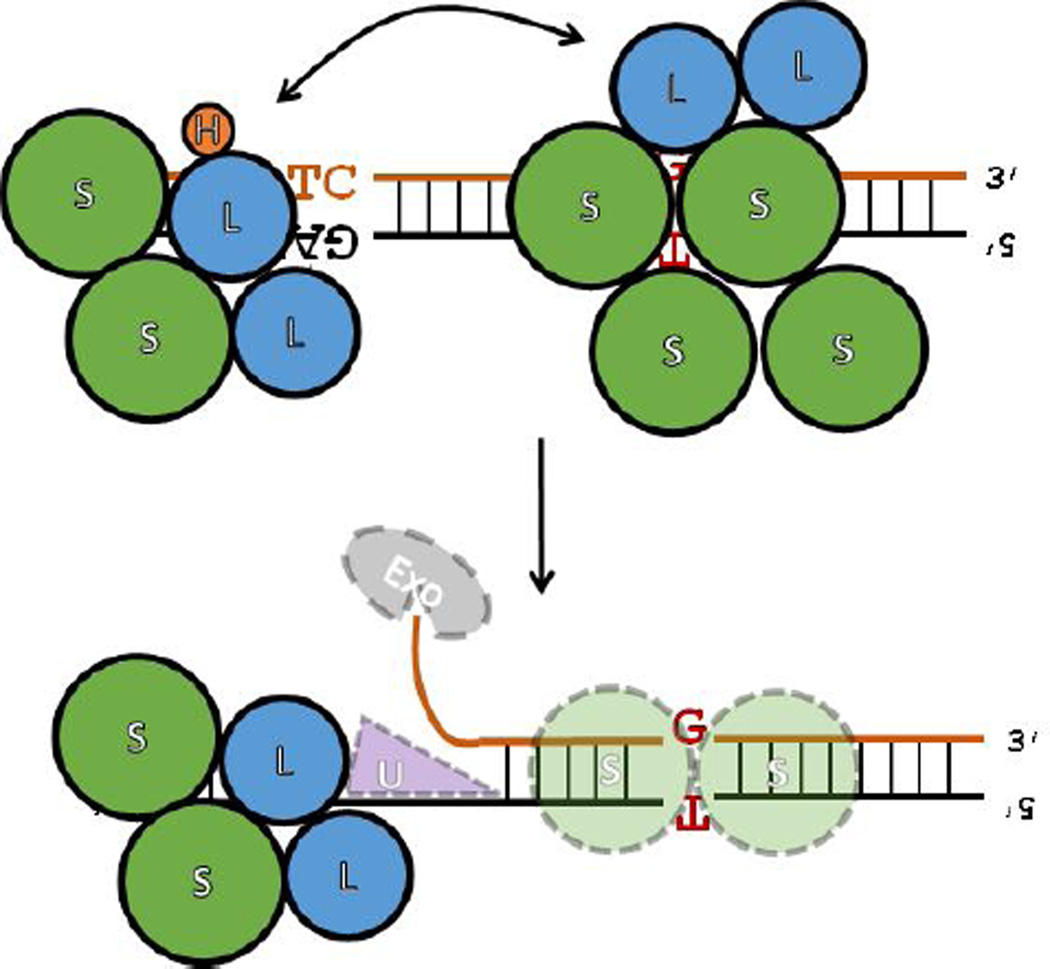Figure 12.
Proposed dual-search / proofreading model of the initiation of mismatch repair in light of the presented AFM imaging data. (Top) MutS can directly identify mismatches, and from these sites search for strand discrimination signals with MutL and MutH through diffusion or direct looping of the DNA. At the same time, MutS, presumably closely trailing the replisome, also anchors MutLH at d(GATC) sites or MutL at nicked DNA (at the unligated edges of Okazaki fragments), and through direct looping or diffusion, scans (proofreads) the local DNA for mismatched base-pairs. The contact between the two sites may occur as a result of ‘mutual’ search from both mismatches and strand discrimination signals. Failure to quickly identify a strand discrimination signal by MutS complexes at mismatch sites results in the recruitment and loading onto DNA of additional MMR complexes. (Bottom) After both a strand discrimination signal and a mismatch are mutually identified, the loops dissociate and MutS anchors MutL in at the nicked sites asymmetrically, in a manner that retains directional orientation relative to the error.

